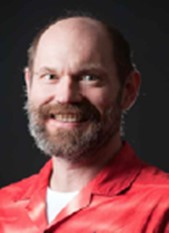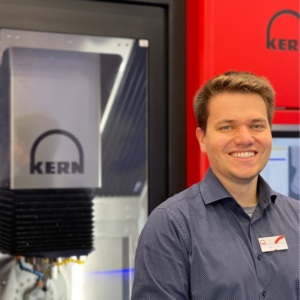Tutorials
Monday 10th June 2024
euspen’s 2024 extensive tutorial programme will cover a range of key topics for the precision engineer
Whilst covering a clear technical curriculum, tutorials are less formal than a lecture; providing more personalised learning in a social atmosphere.
They incorporate existing challenges in the workplace which cover conceptual theories through to best practice applications.
These tutorials will take place on Monday 10th June 2024.
Tutorial 1: FUNdaMENTALs of Precision Design
Monday 10th June 2024
Room: Beech Suite
Time: 08:30 – 11:30
The tutor is Prof. Alex Slocum, MIT, US
This tutorial provides a fast-paced hands-on introduction to rapid precision machine design based on FUNdaMENTAL principles including theory and best practices. Topics include: initial error allocation to enable rapid design, principles of accuracy, repeatability and resolution, bearings, structures, and actuators. Kinematic and elastic averaging-based designs and the implications for bearing life and dynamic performance are stressed with F=kx and w = sqrt(k/m) as recurring themes throughout the design of a machine. Examples will be presented to show how FUNdaMENTAL principles are critically important for an engineer to understand in order to be able to most effectively use modern design tools such as solid modelling and finite element analysis in the design of precision machines.
Learning outcomes:
Attendees should expect to leave with new design tools (spreadsheets) they feel comfortable applying and a host of new design ideas for selecting and integrating bearings structures and actuators in precision machines.
Intended audience:
This tutorial should be helpful for those at the beginning of their careers and also for those who wish to tune up their design approach with linking design approaches with first order analysis to develop designs more rapidly and to check output from FEA.

Alexander Slocum is the Walter M. May and A. Hazel May Professor of Mechanical Engineering at MIT, a Fellow of ASPE and ASME, and a member of the National Academy of Engineering. He has 145+ patents and has helped develop 11 products that have received R&D 100 awards for “one of the one hundred best new technical products of the year”. He pioneered the deterministic design of kinematic couplings (www.kinematic couplings.org) including the standard for all semiconductor wafer transport carriers (SEMI E57-1296). He has helped start several successful precision manufacturing equipment companies and has a passion for working with industry to solve real problems and identify fundamental research topics.
Tutorial 2: Design of large-stroke flexure-based mechanisms
Monday 10th June 2024
Room: Cypress Suite
Time: 08:30 – 11:30
The tutors are Prof. Dr. ir. Dannis M. Brouwer & Dr. ir. Jan J. de Jong, University of Twente, NL
This tutorial explores the design considerations for flexure-based mechanisms, offering practical, model-based design guidelines with a focus on large-stroke flexure mechanisms. Flexure joints play a crucial role in precision devices, providing highly predictable motion without friction, play, and the risk of contamination. They achieve this by elastically deforming in the direction of motion while offering support in other directions. Nevertheless, flexure designers face the challenge of ensuring sufficient stiffness over stroke while adhering to limits on stress, loadability, and (non-linear) dynamics. The tutorial will delve into a variety of unconventional flexure layouts, pushing beyond the current state-of-the-art in large-stroke flexure joints.
Outline of topics:
- Elementary flexural building blocks
- Rotational pivots and translation stages
- Design for large-stroke flexure joints with an application to the T-Flex Hexapod
- Implementation of flexure designs (manufacturing, clamping or monolithic)
- Influence of over- and underconstraint design
Intended audience: Industry as well as academia, entry level is master level.
Expected outcome:
- Knowledge of possibilities and challenges of flexure.
- Use of formulae to gauge dimensions, complemented with FEM for optimization.
- Overview of different of joint topologies.
- Effects of large-stroke on flexure joints and methods retain performance, including compounding, slaving and hybrid layouts.

Prof. Dr. ir. Dannis M. Brouwer EngD received his MSc. degree in mechanical engineering in 1998, and a postmaster (EngD) degree in mechatronic design in 2001 from Eindhoven University of Technology in the Netherlands. In 2007, he received the doctoral degree in mechanics from the University of Twente. He was appointed full Professor at the University of Twente in 2020 and is now chairing the Precision Engineering Lab. He has (co)authored over 50 refereed journal articles, 90 conference contributions and 8 patents on a variety of subjects including flexure mechanisms, kinematics, macro and micromanipulators, variable impedance robotics and precision engineering.

Dr. ir. Jan J. de Jong EngD is an assistant professor in the chair of Precision Engineering. In this role he deepens design principles for precision mechanisms and translates these to other fields, such as medical devices and agro-food robotics. He received a master’s degree in biomedical engineering and a professional doctorate in engineering (EngD) on the design of a medical robot to apply transcranial magnetic stimulation during treadmill walking. Later he obtained his doctorate in the field of precision engineering on the dynamic balance of spatially moving manipulators. His research interests include the kinematics and dynamics of (parallel) mechanisms, grippers, flexure mechanisms and screw theory.
Tutorial 3: 2D and 3D Roughness measurements for engineers & scientists
Monday 10th June 2024
Room: Birch Suite
Time: 08:30 – 11:30
The tutor is Dr.-Ing. Marvin Groeb, Kern Microtechnik GmBH, DE
This tutorial provides a general overview of 2D and 3D roughness measurement techniques and devices. The advantages and limitations of tactile and optical profilers are discussed. The evaluation of 2D roughness parameters such as Ra, Rz (ISO 4278, 21920) but also the more novel areal surface parameters Sa, Sq (ISO 25178) is discussed at length, showing the common mistakes. Moreover, the advanced surface parameters (Smr, Str, Spd…) to quantify surface structures are explored in depth.
Real world sample data for turned, ground, milled and lasered surfaces show the best practice to achieve repeatable and correct standards.
Learning goals:
- Choosing the correct measurement devices and methods
- ISO 4278 and ISO 25178, ISO 21920
- Troubles, Pitfalls, and easy mistakes when evaluating surface roughness
- Best practice for industrial engineers
Intended audience:
This tutorial is aimed at both industrial engineers, manufacturing specialist and researchers that work with roughness measurements.

Dr.-Ing. Marvin Groeb is the Head of Future Applications at Kern Microtechnik GmbH, Germany. His formal education is a M.Sc. in materials science and a PhD in material analytics from the Technical University of Darmstadt, Germany. After a Postdoc Year in Switzerland focusing on Diamond Turning and Optical Metrology; he is now a senior researcher in subtractive manufacturing and surface topography enthusiast. Marvin’s research interests are micro-milling, ductile milling of hard and brittle materials but also the superfinishing of non-ferrous, ferrous and ceramic materials. The constant stretch between industry tolerance requirements on surface finishes and the different approach the academic world takes, has led Marvin to deep dive into optical and tactile measurements of surface roughness.

